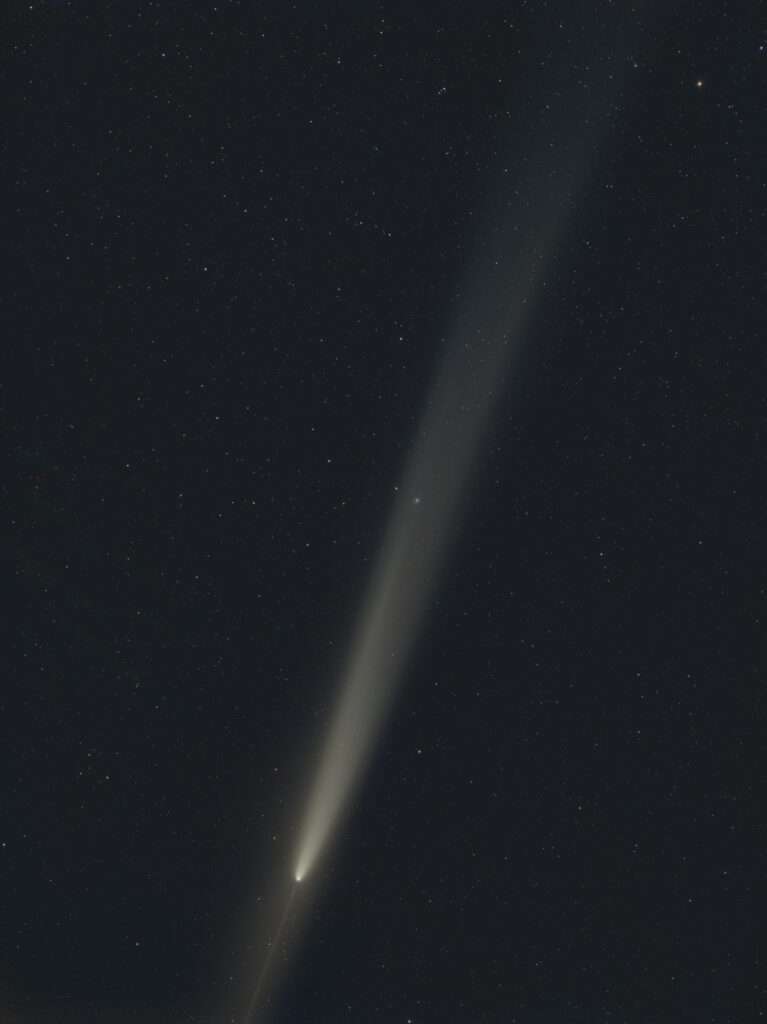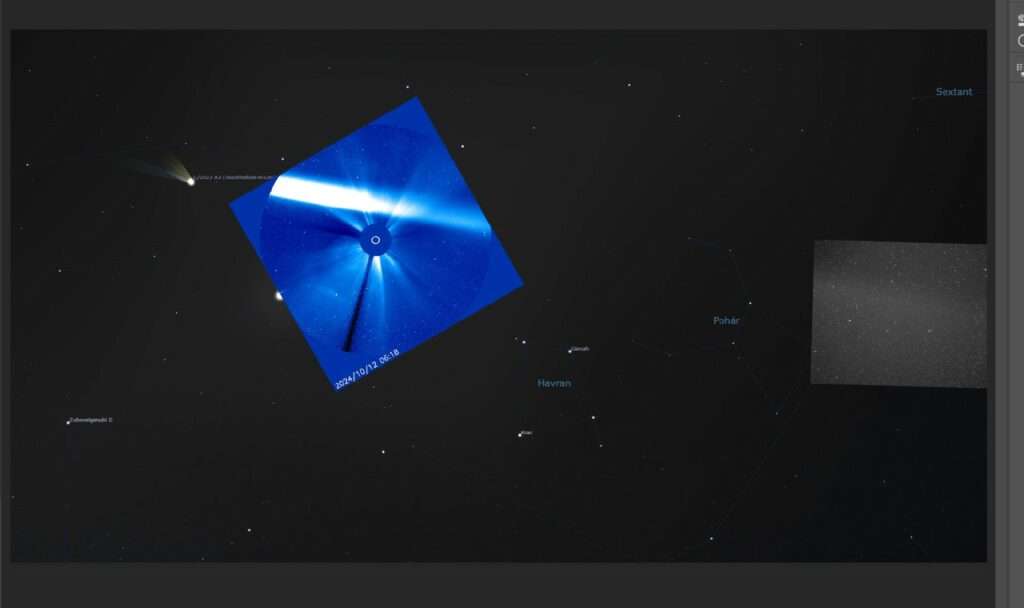This photo of the comet taken on 13 October 2024 between clouds from the village of Praskačka roughly corresponds to how the comet can be seen with the naked eye in the sky without direct light sources. PHOTO by Jakub Černý
The long-awaited comet C/2023 A3 (Tsuchinshan-ATLAS) has finally appeared in the evening sky. Although it was clear that the comet would be visible to the naked eye, the brightness of the comet alone does not yet tell us anything about its appearance in the sky. This depends primarily on the brightness of the tail, and there was a great deal of uncertainty about how long or prominent it would be. But initial observations have confirmed that it is the most prominent comet to be seen in the northern hemisphere since 1997, when Comet Hale-Bopp graced the sky.
Approximately 1-2 hours after sunset the comet can be seen low on the horizon where the Sun used to set, to the left of the bright star Arcturus. It is decorated with a tail about 10° long, equivalent to the length of a fist with an outstretched hand or 20 full moon diameters.
At the same time, it should be mentioned that the media often report incorrect figurethat this comet has a period of 80,000 years. In fact, it is a new comet from the Oort cloud, which means that it is near the Sun for the very first time, and according to its current orbit, the gravity of the planets will direct it into interstellar orbit after this passage - that is, it will be ejected into interstellar space from which it will not return. The erroneous period figure apparently comes from a NASA blog, which, while of great authority, often contains inaccuracies caused by a desire to write impressive articles for the lay reader.
Another interesting thing about this comet is that while it is rising in the evening sky, the dust tail is still visible in the morning sky. This was due to the fact that on October 9 the comet passed almost exactly between the Earth and the Sun. The dust tail extends behind the comet in the shape of a "fan", and because of this geometry we are looking at the fan from above. One edge of the fan is already in the evening sky, pointing away from the Sun, while its edge extends across the comet towards the Sun, where it can be seen in the SOHO coronagraph and also in the morning sky, where it can only be seen from very dark areas and only photographically. From there it will slowly fade away as it rolls across the evening sky. A similar effect was seen in the penultimate return of Comet Halley in 1910.
The comet's observability by eye will end in about 1 to 2 weeks as it moves away from the Earth and the Sun and fades rapidly. For more information and a reader photo gallery, see here.
Jakub Černý, Society for Interplanetary Matter

An image from the FRAM telescope in La Palma (Canary Islands), where it is operated remotely by the Institute of Physics of the CAS as part of the Cherenkov Telescope Array project. The image also shows very clearly the so-called contrail, perhaps remembering the spring of 1957 and the comet Arend-Roland. PHOTO - Martin Mašek, Institute of Physics of the CAS and member of the Czech Astronomical Society

The background of the Stellarium map with the position of the comet in the evening sky is shown:
a. Image from the SOHO LASCO C3 coronagraph taken on 12 October 2024. The Sun is hidden behind the target in this image to show its surroundings. The tail of comet C/2023 (Tsuchinshan-ATLAS) stretches across the field. While the comet is well past the upper left edge in the evening sky, the other end stretches far out into the morning sky again.
b. Image of the end of the comet's tail in the morning sky on 12 October 2024, by Martin Mašek (Physical Institute of the CAS), FRAM at Cherenkov Telescope Array Chile, 135mm f/2 lens, 40 minutes exposure.
(For)/ gnews - RoZ



